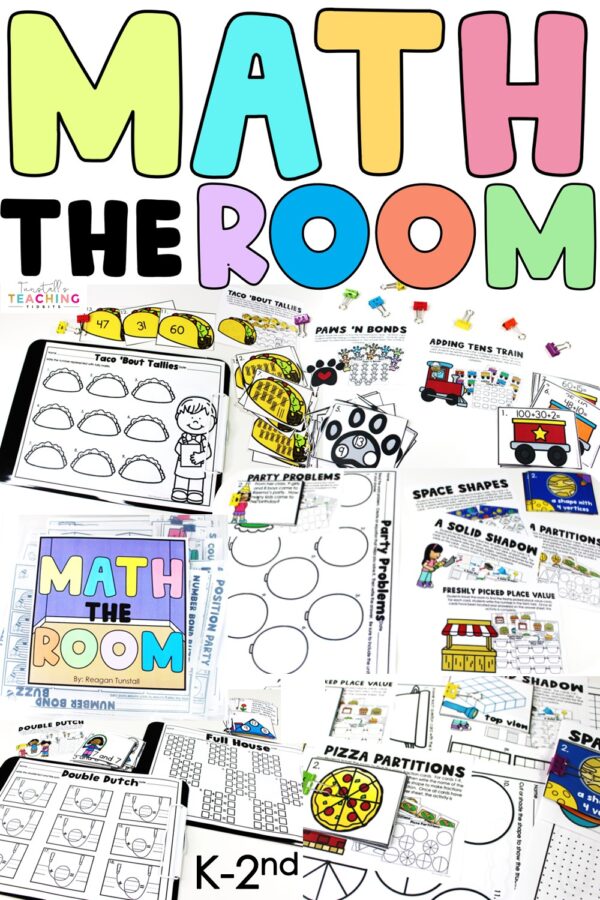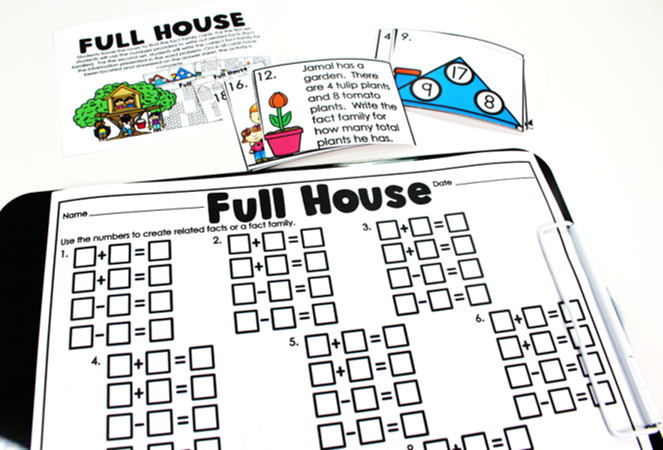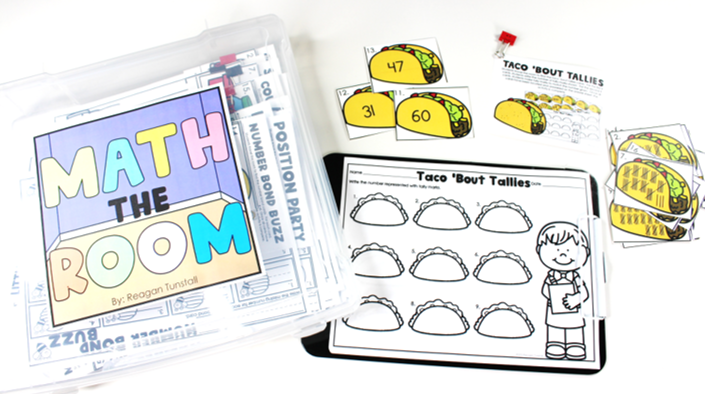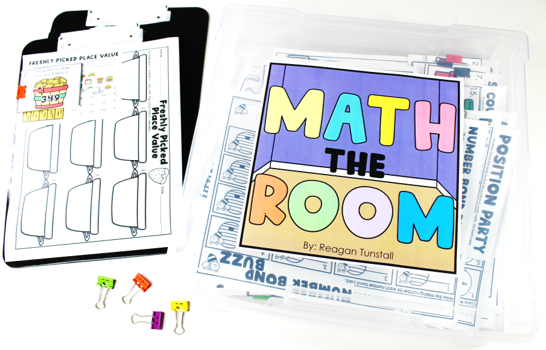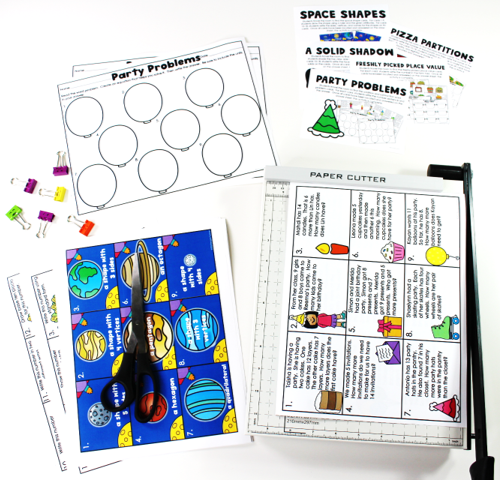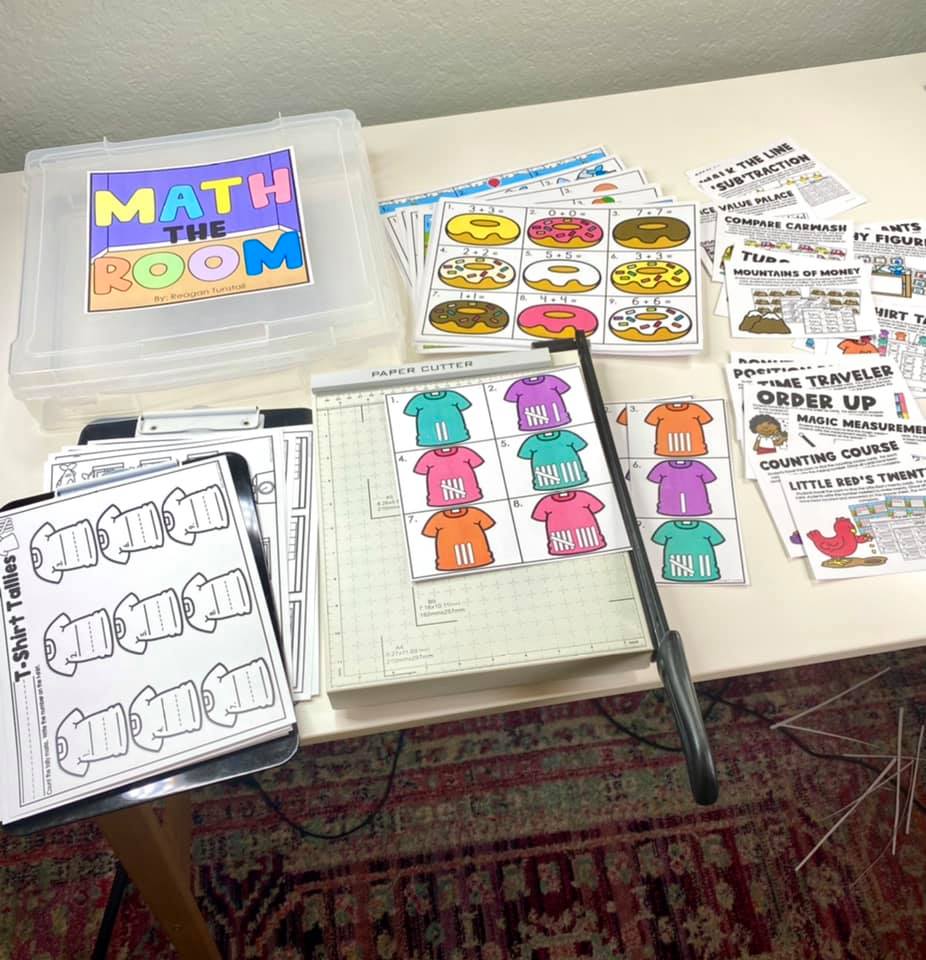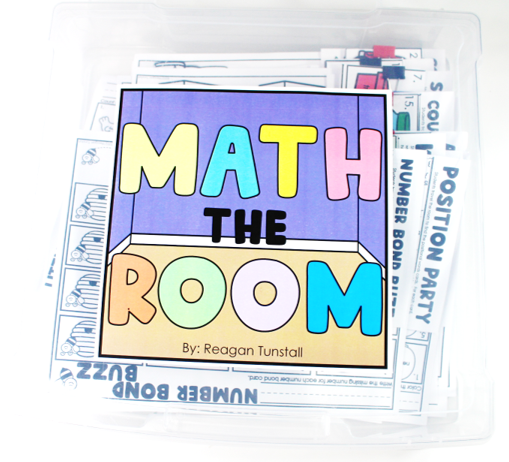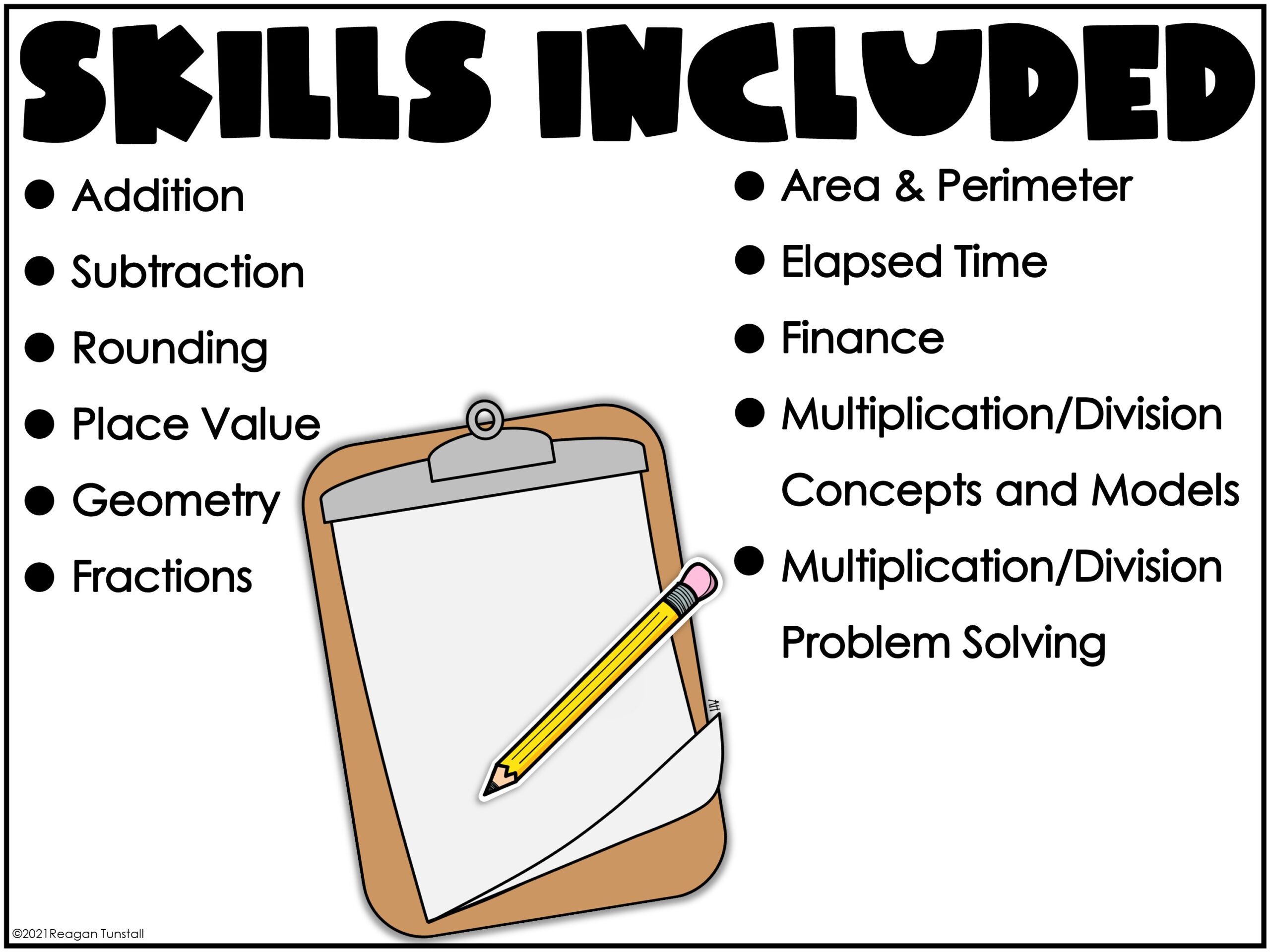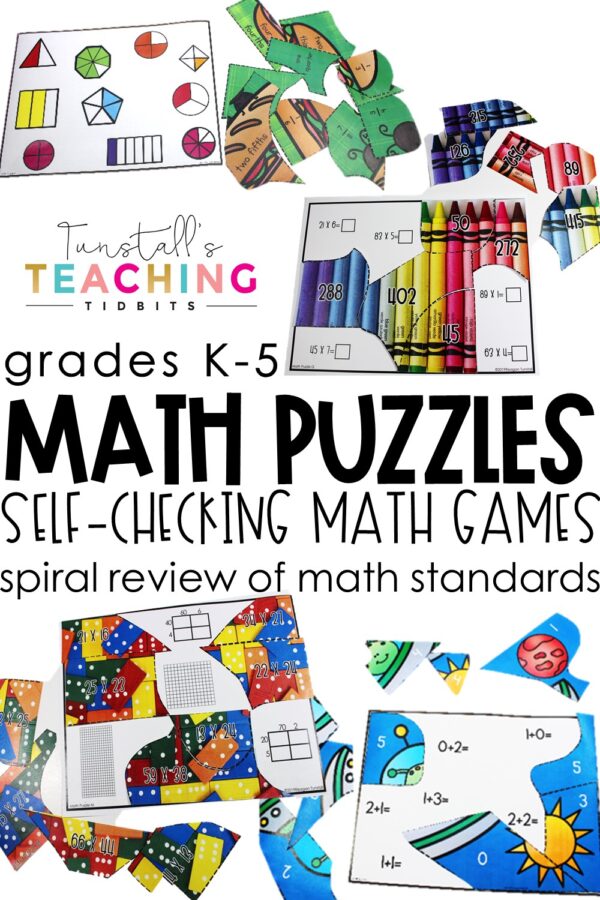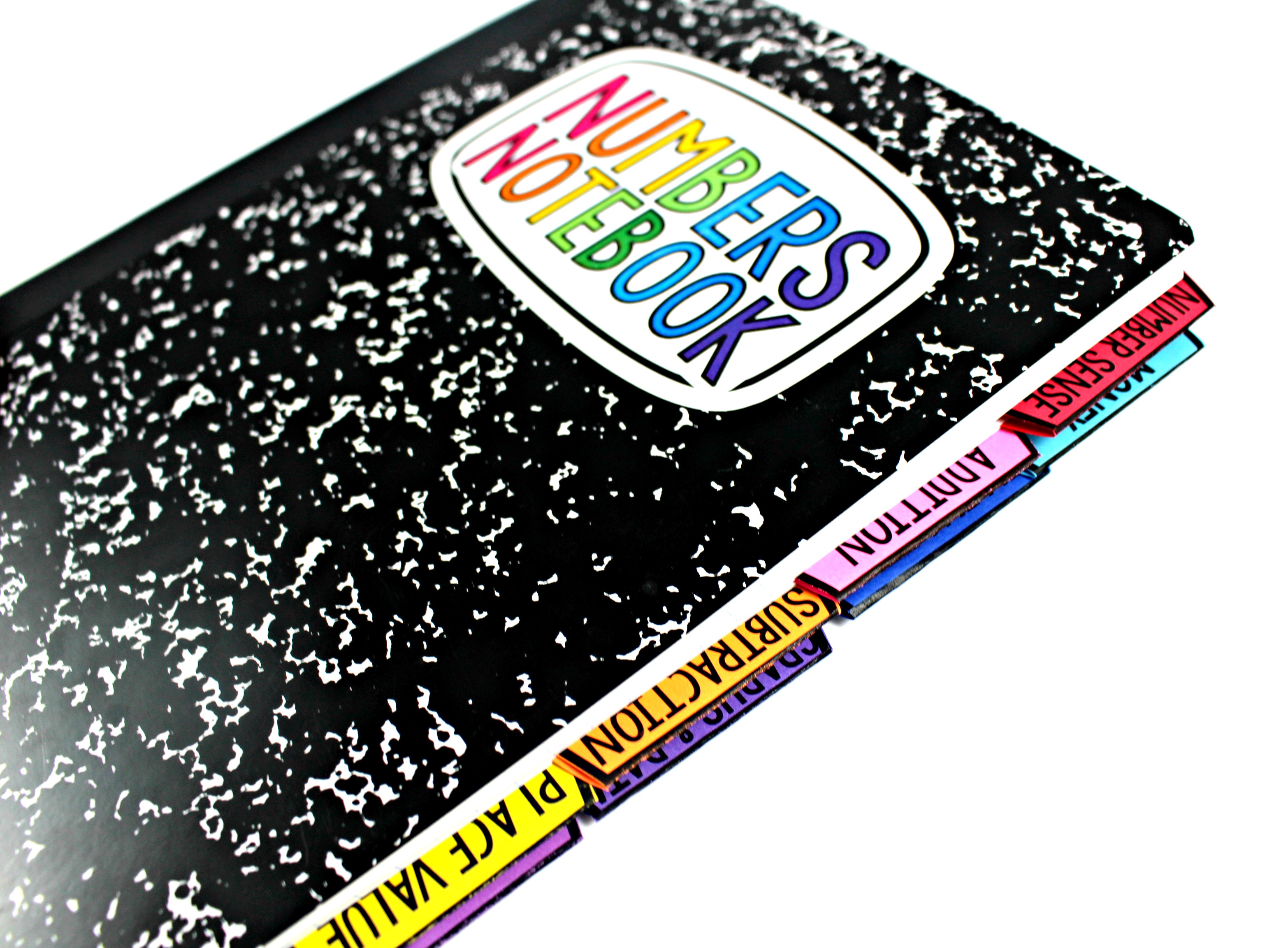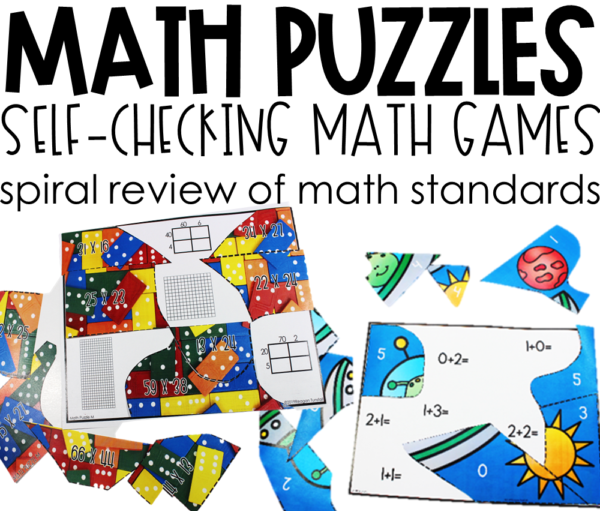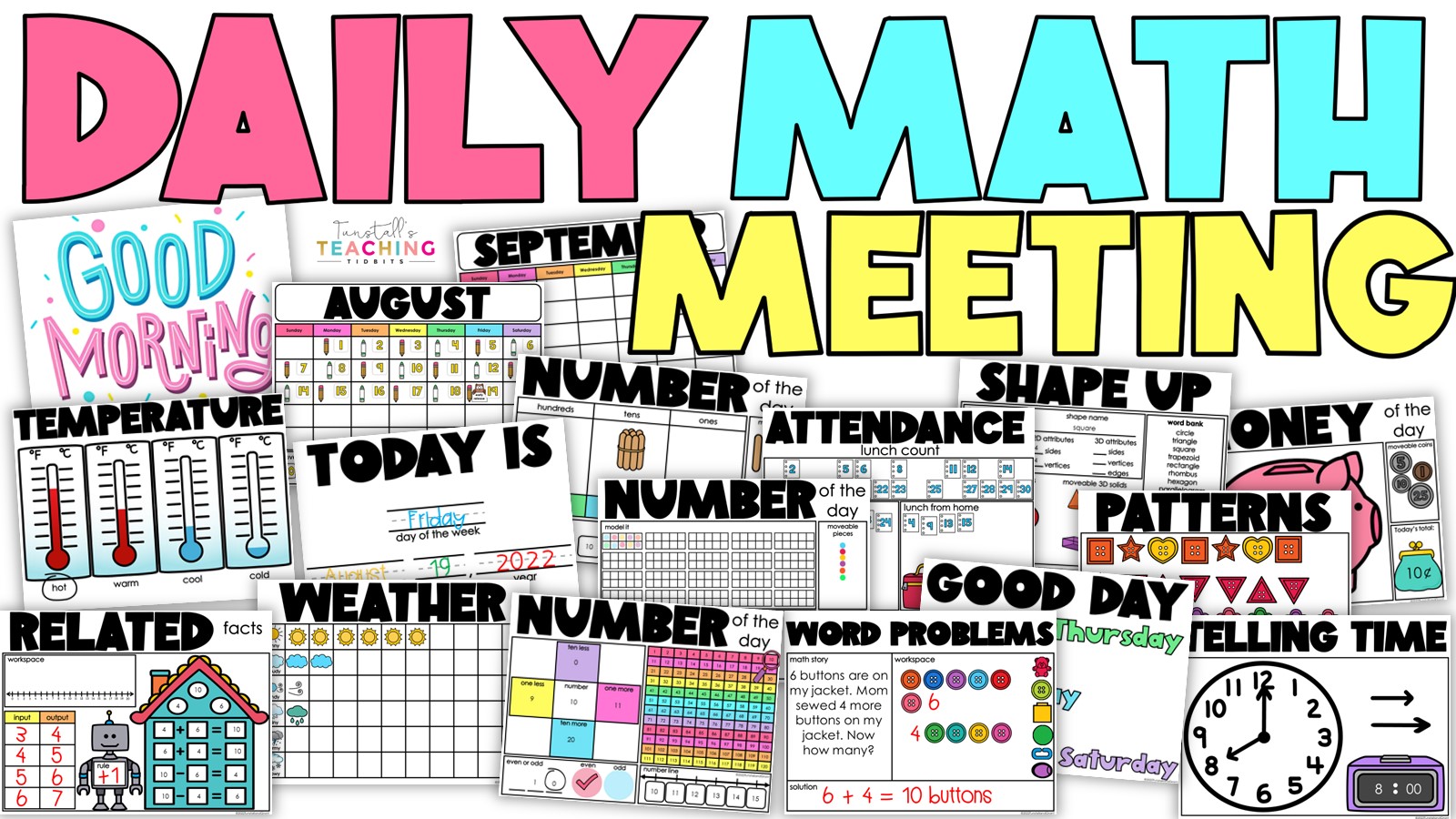Math the Room
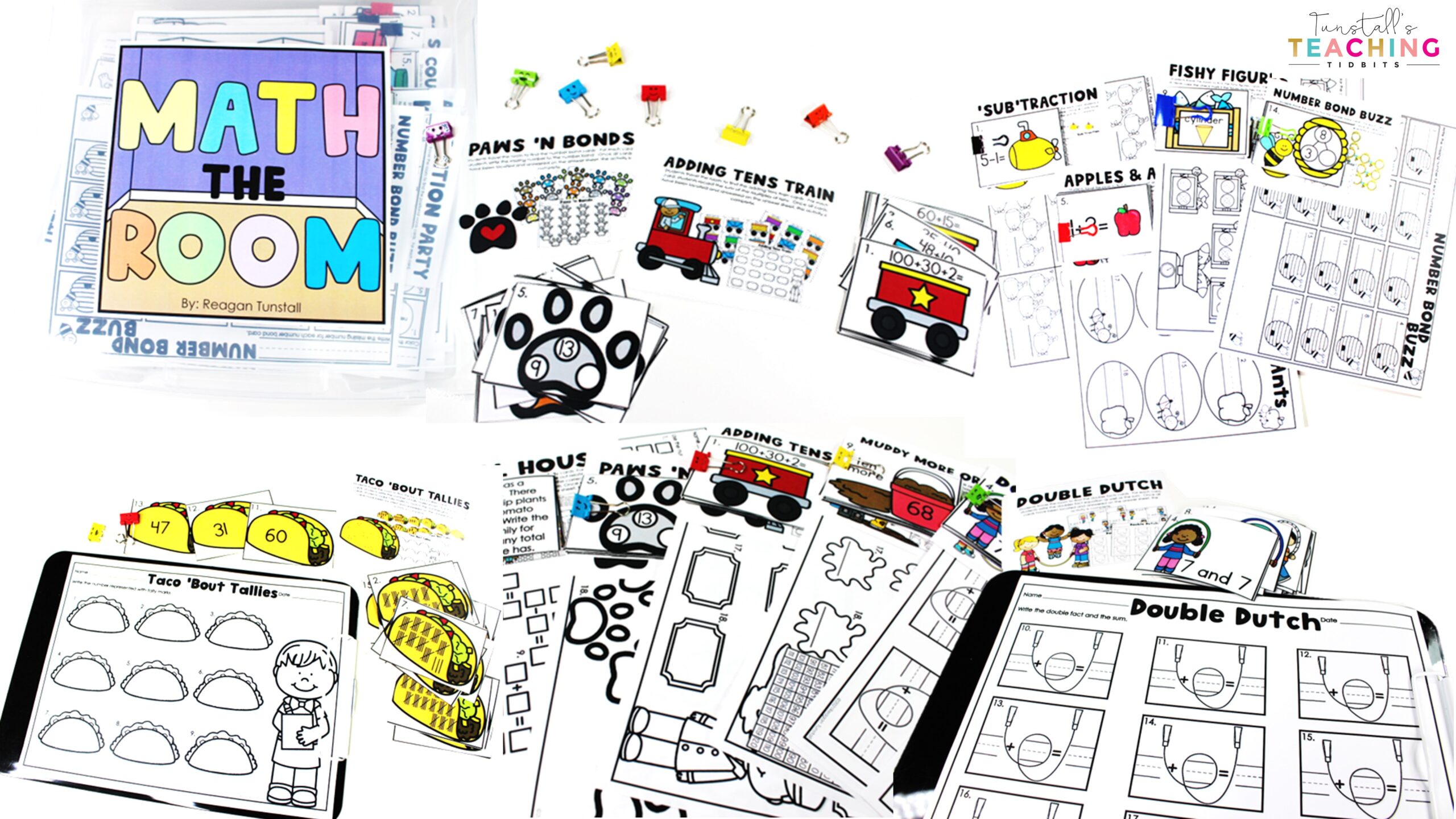
A long-standing fan-favorite workstation of the primary grades during literacy has always been write the room. The students love the ability to work while moving around the room on the hunt for their next activity card. Teachers love the engagement and the interest a write the room activity brings to the content. For these reasons, we wanted to create Math the Room. Math the Room is the math version of write the room. In this post, we will focus on Math the Room for K-2. We also have a 3-5 version of this resource: Solve the Room.
MATH THE ROOM
After considering how this would fold into the Guided Math family of resources, we decided this resource would serve teachers and students in two ways. First, teachers would be getting a resource jam PACKED with the standards for each grade level that would carry them through the school year. Second, Math the Room aligns to the philosophy of providing spiraled review practice through the year in many formats. Finally, this resource pulls in the learners with exciting themes and variety.
HOW TO USE
Math the Room for each grade level contains 20 different workstations. Each workstation is unique, so students’ engagement is just as high from the first activity to the last. To use this resource, you’ll cut apart the 18 cards and place them around the space at different “hiding” spots. Students will hunt around the room with their recording sheets (usually on a clipboard or other hard surface). As students find an activity card, they solve the math and record their answer on the correct place on the recording sheet. Because they will find the cards in any order, they use the recording sheet to track their progress. Once all of the cards have been found and solved, the workstation is complete. You do not need to place all 18 cards out at once. Many of the sets have cards 1-9 and then cards 10-18 that could be used at two different times. Likewise, one set of 18 cards could last a few days in a workstation! The versatility is endless.
CREATING INDEPENDENT WORKERS
Workstations are meant to be the application and refinement of skills. This happens when students have an understanding of the content and are working on becoming more accurate and fluent with skills. For students to work independently while away from the teacher at workstations, the information should not be new. Workstations are a spiral review of past concepts. The routine of a Math the Room workstation stays the same, and the content on the card changes. This builds independence because students are both familiar with the skills and the routine and expectations. This is the formula for independence. The skills although familiar, are still going to provide a challenge resulting in refinement of skills for students.
ORGANIZATION
You likely have a favorite way to prep and store your workstations already, but here is how we chose to prep and store Math the Room. I simply printed the cards on cardstock. I reduced the instruction card to 50% allowing it to be clipped to the front of the recording sheet. Because these stations are so similar, I really just wanted to have the instruction card as a quick reference as I explained the station. Finally, I put the cards together with the recording sheet(s) and used a small binder clip to keep it secure. Each of the 20 sets went into a tub and I used the cover of the resource to label the tub.
SKILLS INCLUDED
Each grade level has a list of skills. Although K-2 may have some skills which overlap, the actual activities are all unique to that individual grade level. This makes it easy to use these in multi-level classes or for differentiation. Below you can see the skills for each grade level. To find the resource, click any pictures below or HERE for all three.
MATH PUZZLES
Similar to Math the Room, Math Puzzles provide a year of skill practice in a highly engaging workstation. Math puzzles are also self-checking giving students immediate feedback and the ability to rethink their process. To read more about Math Puzzles, click HERE or the picture below.

 Contact Us
Contact Us